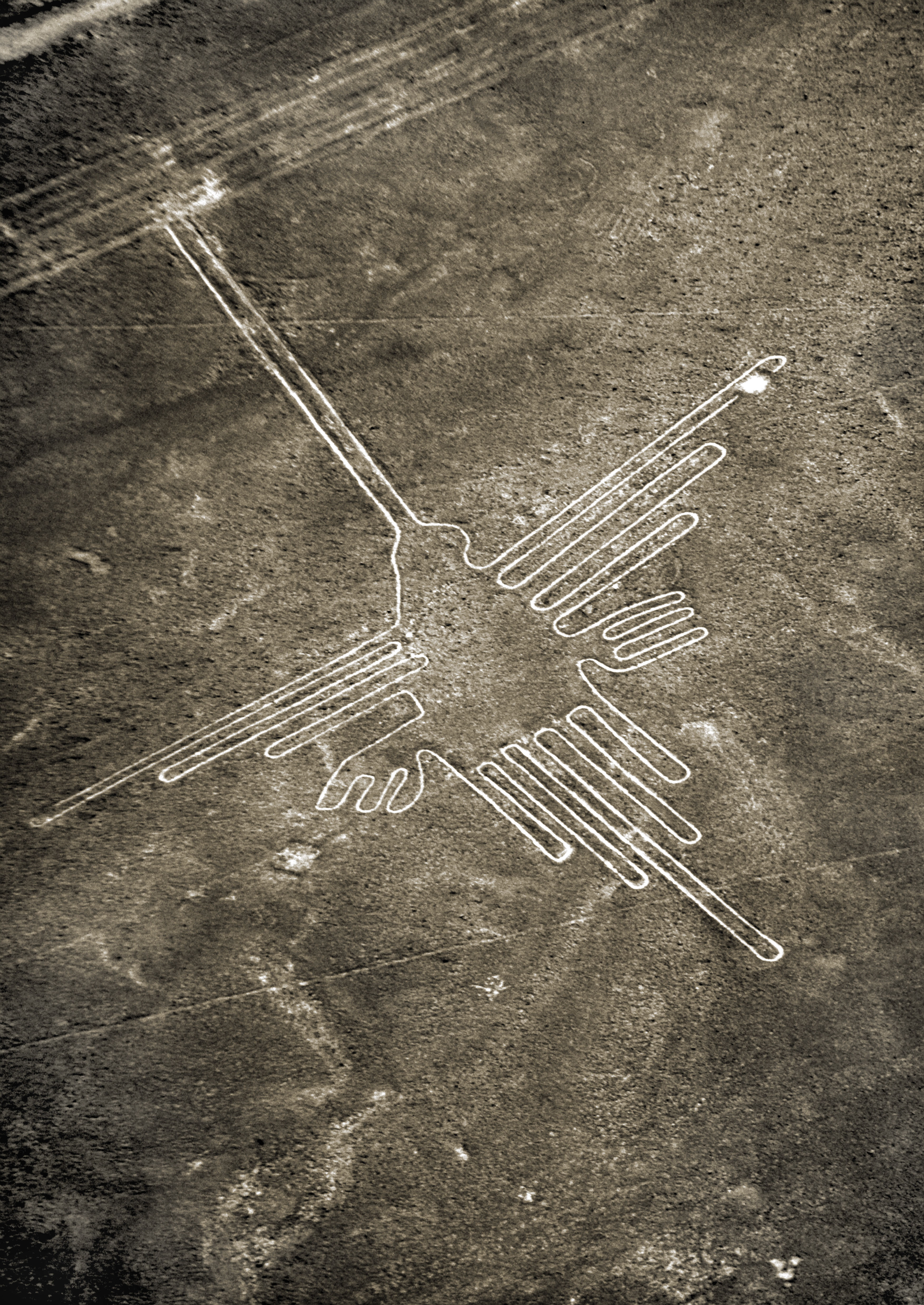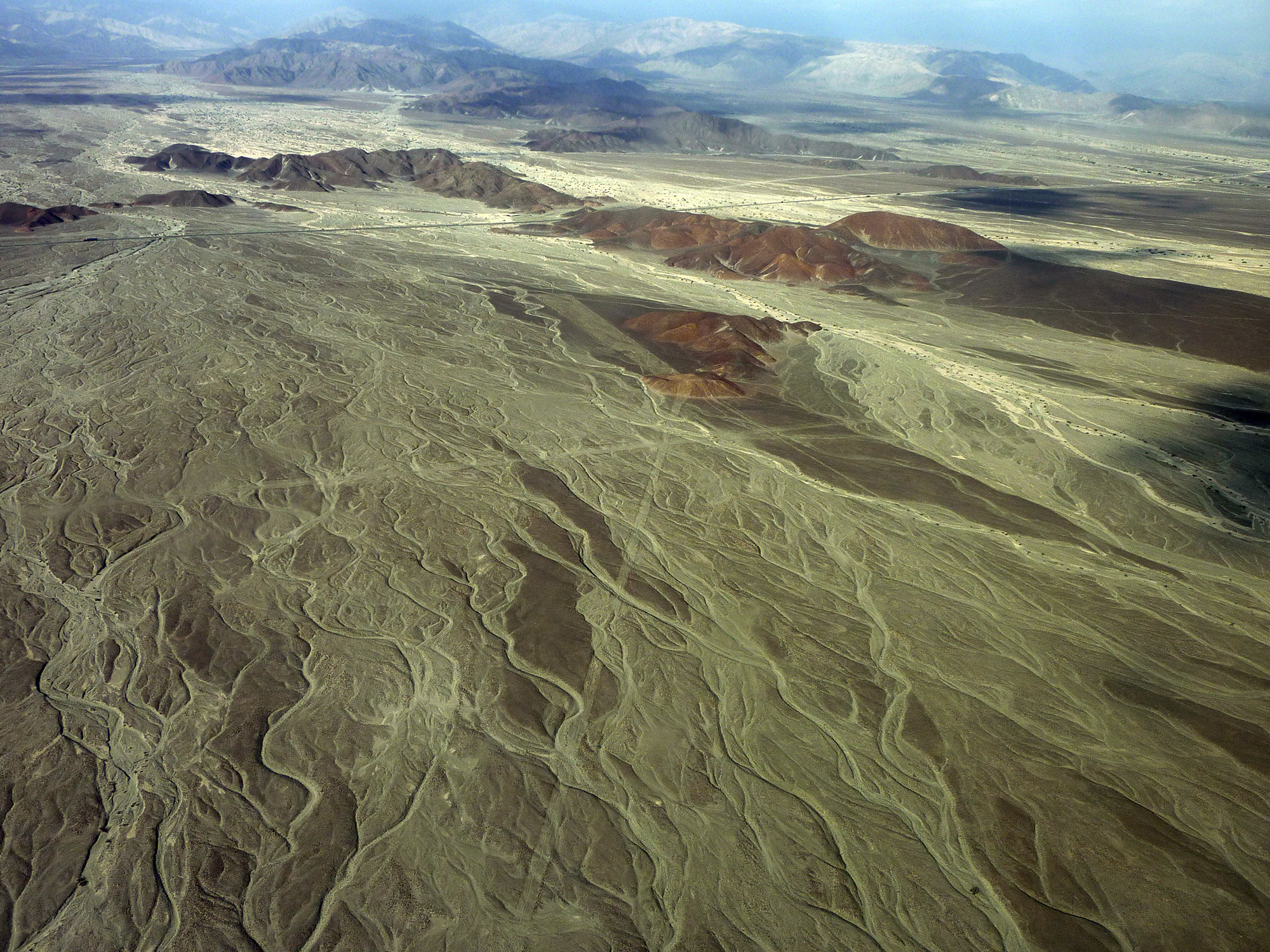Nazca lines are giant designs marked into the ground in the desert of southern Peru. Such designs are known as geoglyphs. They were built by people of the Nazca culture, also spelled Nasca. The Nazca lived in the region between 100 B.C. and A.D. 800. The geoglyphs can only be seen in full from the air.

Many of the geoglyphs form the outlines of gigantic animals and plants. They include figures of a killer whale, a lizard, a monkey, and a spider. More common are geometric forms, including spirals, straight lines, trapezoids, and triangles. Some of the lines appear to spread outward from small hills, like the spokes of a wheel. The lines stretch for miles or kilometers across the desert. Platforms lie near the bases of many of the trapezoids.
The Nazca made the geoglyphs by removing surface stones and piling them along the edges of the designs. Removing the dark rocks exposed the bright sand beneath. Some modern observers have marveled that the Nazca could construct such huge designs without being able to view them from the air. However, researchers have demonstrated that such geoglyphs can be constructed fairly easily. The builders produced straight lines, for example, by sighting wooden poles along the desired path. They made spirals and curves guided by a rope attached to a fixed stake, producing an arc in much the same way a compass does. The designs have lasted for centuries in the desert environment, with little rain or wind to wear them away.

Airplanes flying over the region first spotted the Nazca lines in the 1920’s. At first, scholars thought the lines were ancient roads. Maria Reiche, a German teacher living in Peru, began investigating the lines in 1946. She believed the lines formed an astronomical calendar. Reiche spent over 50 years trying to prove her theory. Scholars today do not think this theory is correct.
Today scholars believe that the Nazca lines had several functions. Investigations by scientists indicate that people gathered and walked on the lines. Scholars think that people placed offerings on platforms around the shapes to implore the nature spirits to provide rain for their crops. The animal designs symbolized the essence of the nature spirits, whereas some of the geometric lines led pilgrims to ritual centers.
In 1994, the United Nations Educational, Scientific and Cultural Organization (UNESCO) declared the Nazca lines a World Heritage Site. UNESCO gives this designation to areas of unique natural or cultural importance.
See also Nazca ; Reiche, Maria .
